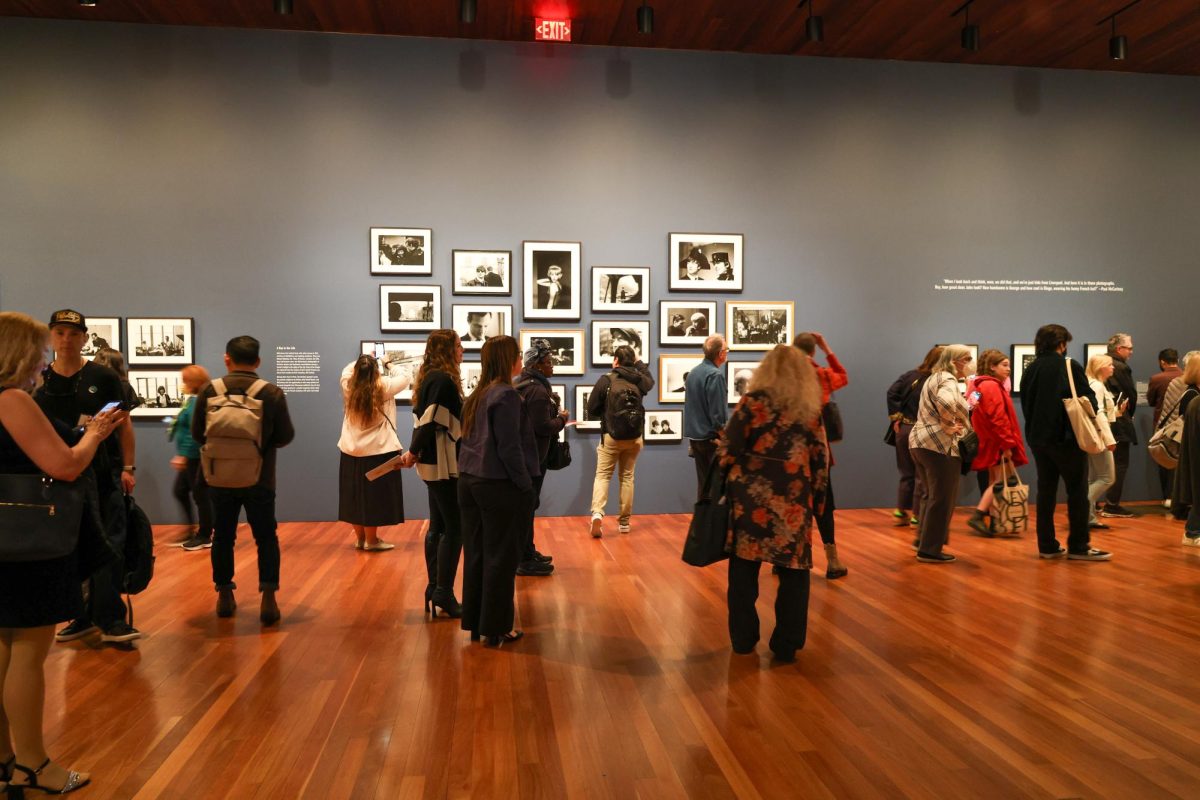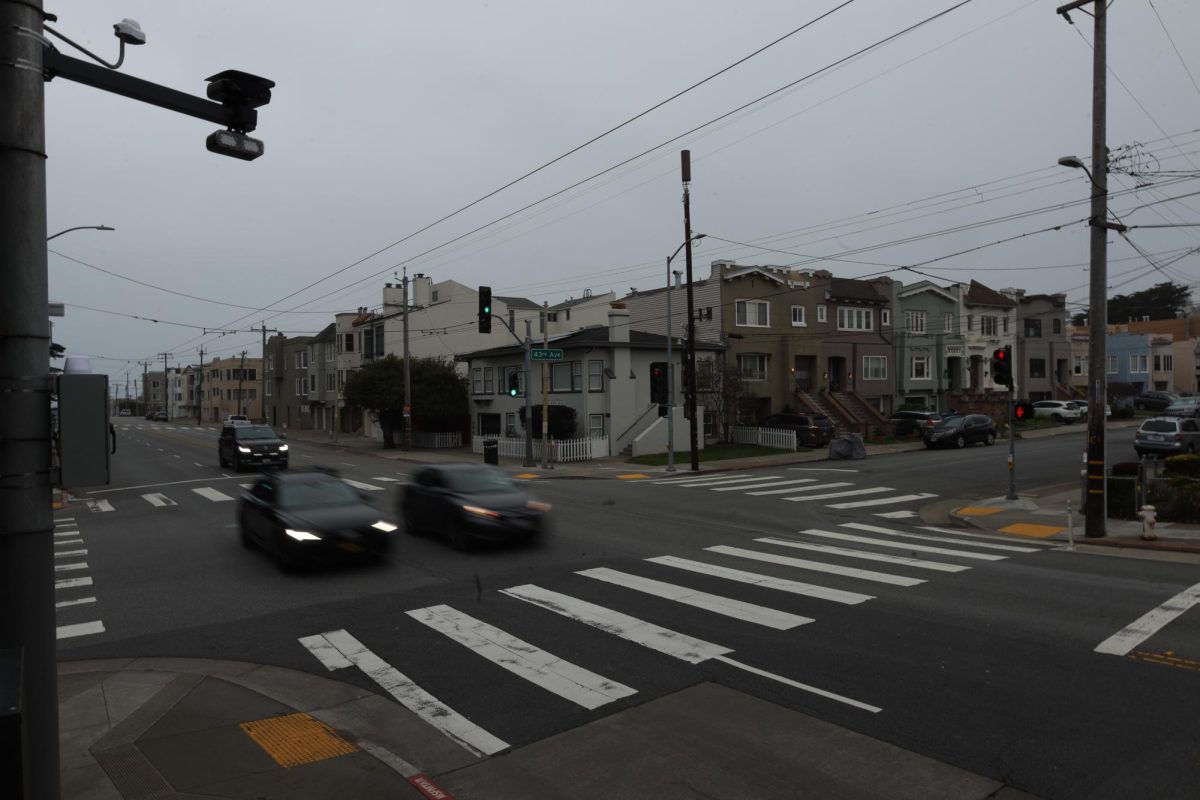Though San Francisco has made great strides in its effort to be bicycle friendly, pedaling through the cities congested streets, dodging Lyfts and Ubers, suffering up steep hills, all while avoiding getting your tires caught in MUNI tracks, can be a daunting endeavor.
The good news is there are plenty of free and affordable resources available to help students realize their cycling ambitions. I’ve compiled a list of those resources, plus some helpful tips I’ve learned both as a cyclist in the city and in the near decade I’ve spent working as a bicycle mechanic.

Rogelio X, a Power to the Pedal student assistant, diagnosis an issue with a bicycle. Thursday, Oct. 10, 2019.
Safety first
From 2010 to 2018 San Francisco saw an average of less than three cycling-deaths per year. Per capita, New York City had about a third less fatalities than San Francisco for the same years, and Los Angeles had just slightly more than San Francisco, according to city data.
So is San Francisco a safe place to ride? It can be, and efforts are being made to improve safety. The number of bike lanes is ever-increasing, and the city has promised 20 more miles of protected bike lanes (those with physical barriers between cyclists and the rest of the roadway) in the next two years as part of the city’s goal of eliminating traffic fatalities by 2024.
But your actions, not the city’s, play the greatest role in your safety.
Though most of the same rules of the road that apply to cars apply to bikes as well, common sense is key. Never ride the opposite way of traffic, avoid riding on the sidewalk, and don’t ride so close to parked cars where an opening door can cause an accident.
If you feel it is safer, you may occupy an entire vehicle lane, even if a bike lane is present (though many drivers are unaware of this). Use hand signals when riding in busy areas, especially around other cyclists.
Whether or not it is reasonable to expect cyclists to stop at every stop sign has been a point of contention. Advocates have petitioned city leaders to adopt a policy that would allow cyclists to treat stop signs as yield signs. Idaho adopted such a policy in the 80s, and more recently Colorado, Oregon, Delaware and Arkansas passed similar laws. Some of these laws also include the right for cyclists to treat red lights as stop signs.
Always plan out your route. Needlessly climbing a steep hill is extremely frustrating, and ending up on a busy street without a bike lane can almost always be avoided. The cycling option on Google Maps is a great place to start and can help you avoid both these things — though you’ll likely perfect your route over time.
Get a helmet that fits and isn’t expired. Most manufacturers will tell you a helmet lasts five years before the crush properties in the foam are compromised. That said, an old helmet’s better than no helmet. A helmet that’s been crashed should be replaced.
If you ride at night, lights are a must. A front light is required by law as are reflectors.
The San Francisco Bicycle Coalition is a bicycle advocacy group which offers an array of free workshops centered around urban bicycle riding safety. Their website is also a great resource for good-to-know information, from laws, locking techniques, and routes.
On Campus resources:
Power to the Pedal is SF State’s bicycle outreach program, which offers free basic bike maintenance and advice from 11 a.m. to 1 p.m. on Tuesdays and Thursdays, usually between the Humanities and Fine Arts buildings, or by appointment. Innertubes and other basic supplies are provided free of charge to students.
Follow Power to the Pedal on Instagram or Facebook to get the scoop on group rides.
Need to make a quick adjustment or pump up your tires? Purple work stations with pumps and rudimentary tools are located between the Library and Administration building and along the bike path adjacent to the West Campus Greens.
Need a bike?
Pick the right bike for the job. A hybrid, road, or commuter specific bike will serve you well for commuting where heavier and slower mountain or cruiser bikes may be less ideal. Consider the steep hills if a single-speed or fixed-gear catches your eye.
Expect to pay at least $350 for a decent quality bike from a local shop. Used bikes can be had for less, though are often a gamble for beginners. Stay away from department stores to buy bikes (they are low quality and often poorly assembled) and be cautious if buying online. Bikes purchased online usually require assembly and a tune up before being ridden.
A local bike shop can assist you in finding the correct bike (in the correct size!) for the job. Besides the guidance, shopping in brick-and-mortar shops can come with valuable perks like maintenance plans and warranties. Bike buying is like car buying — some haggling on price is ok, especially on pricier items.
Hands-on approach
Bike Kitchen
Interested in learning to wrench? For a $6 fee, the San Francisco Bike Kitchen in the Mission District offers their workspace including tools and volunteers to guide you through fixing your bike or even building one from scratch. Second and fourth Mondays are geared specifically toward women, transgender people and femmes.
Mikes Bikes
Mikes Bikes, with a San Francisco location in the SoMa and several others throughout the bay, offers free classes to learn to wrench on Tuesday nights (previously taught by yours truly). Sports Basement in the SoMa offers a similar free clinic on Saturday afternoons.
Bicis Del Pueblo
Bicis Del Pueblo is an organization which holds free hands-on bike repair and riding skills workshops in the Excelsior District. With a particular focus on inclusivity toward black, indigenous, and people of color, the workshops are taught in Spanish and English. Students who commit to three sessions can build their own bike and receive a helmet, lock and lights after completion.
Locking Up
Personally, I always ask to bring my bike inside wherever I go and avoid locking up around the city at all costs — though maybe working at a shop where customers come in daily after having had their bikes stolen has made me paranoid.
The brazenness of thieves is astounding, and often even the best locks do nothing. On several occasions I’ve seen the thin tubing of bike frames cut by thieves in order to steal the bike for its components alone.
For locking on campus, invest in a good U-lock and park in areas where the presence of people is more likely to deter theft. A cable lock is great for securing wheels and the seat, but can be cut and should never be relied upon for a whole bike.







